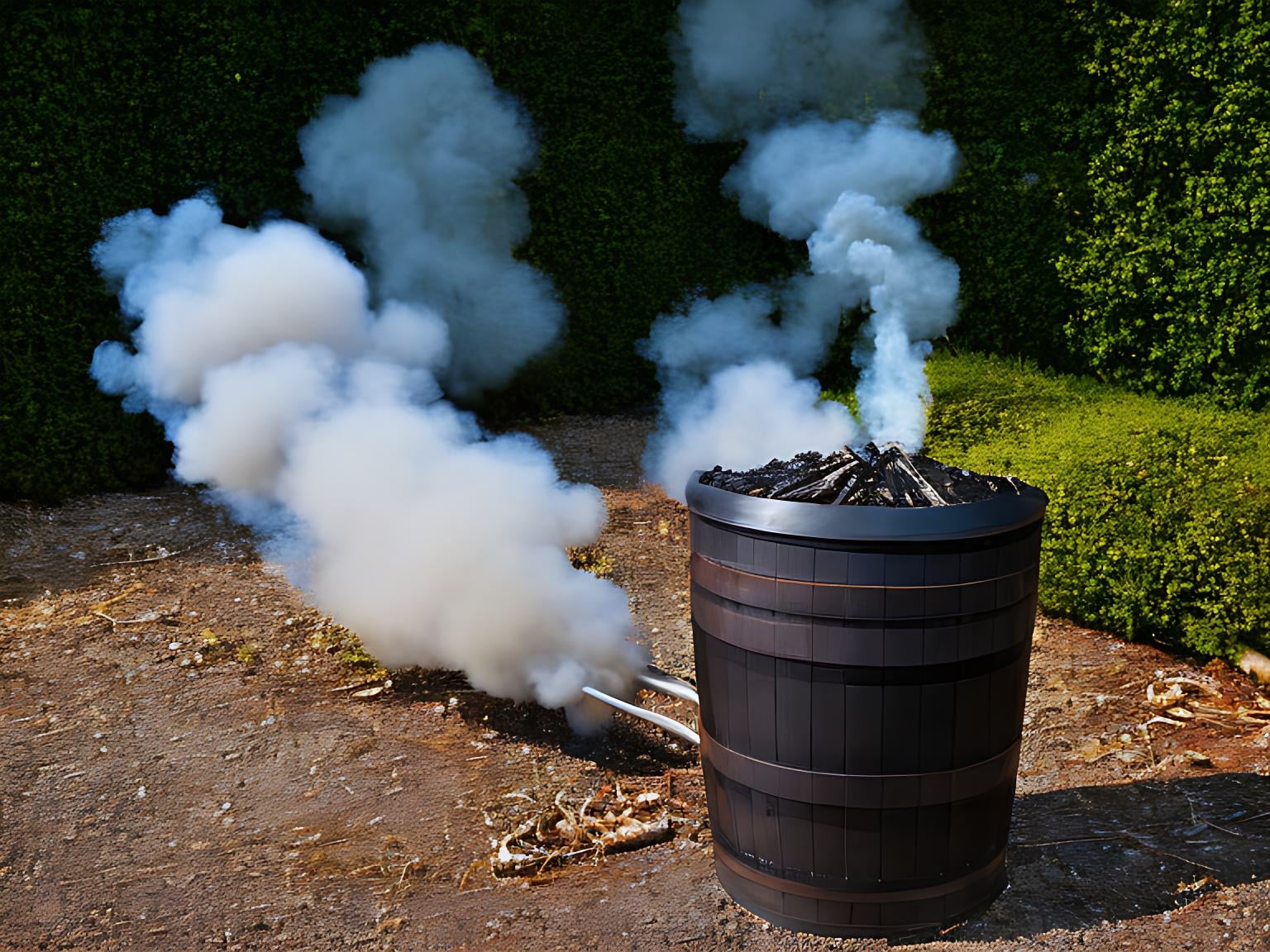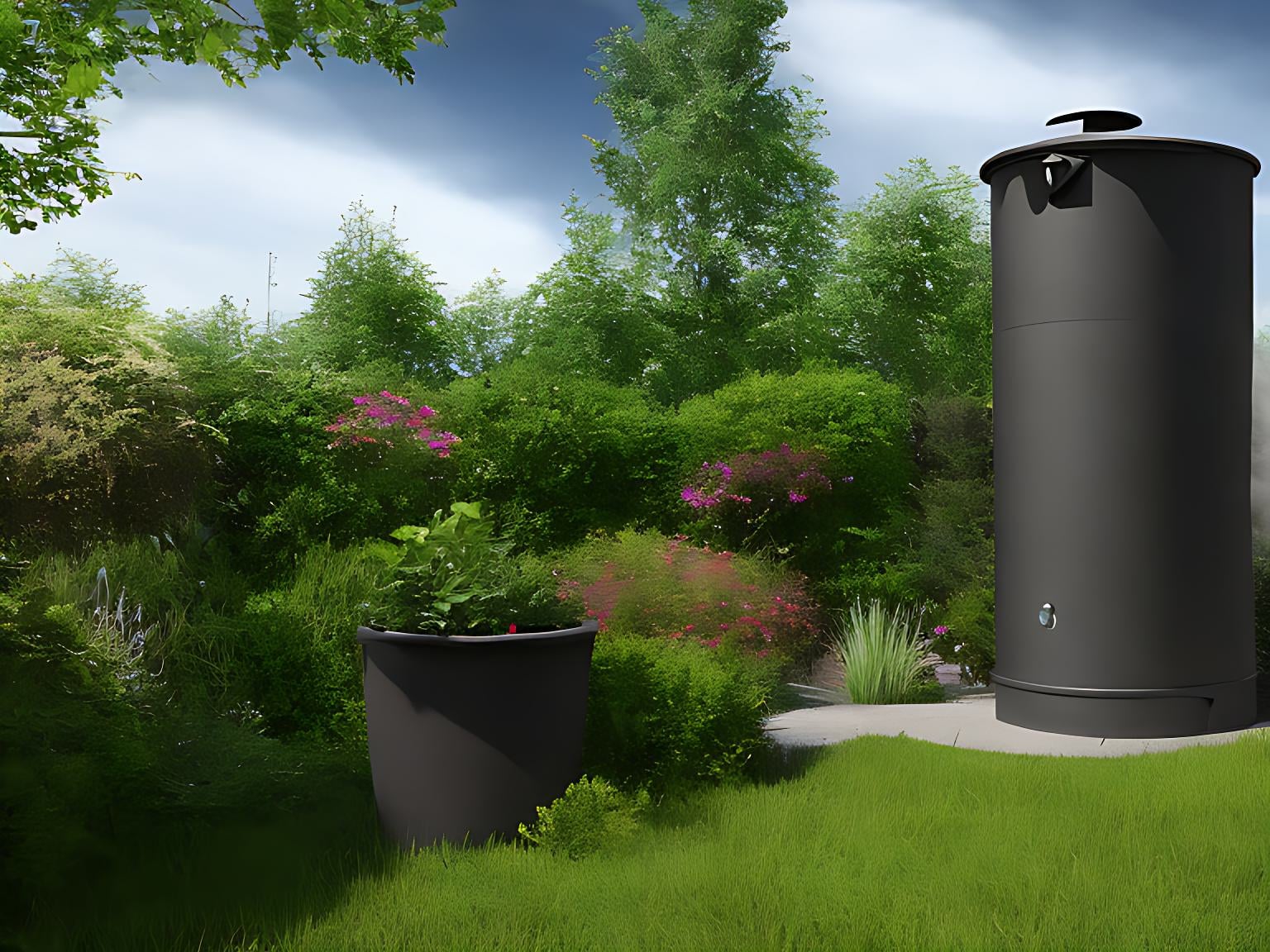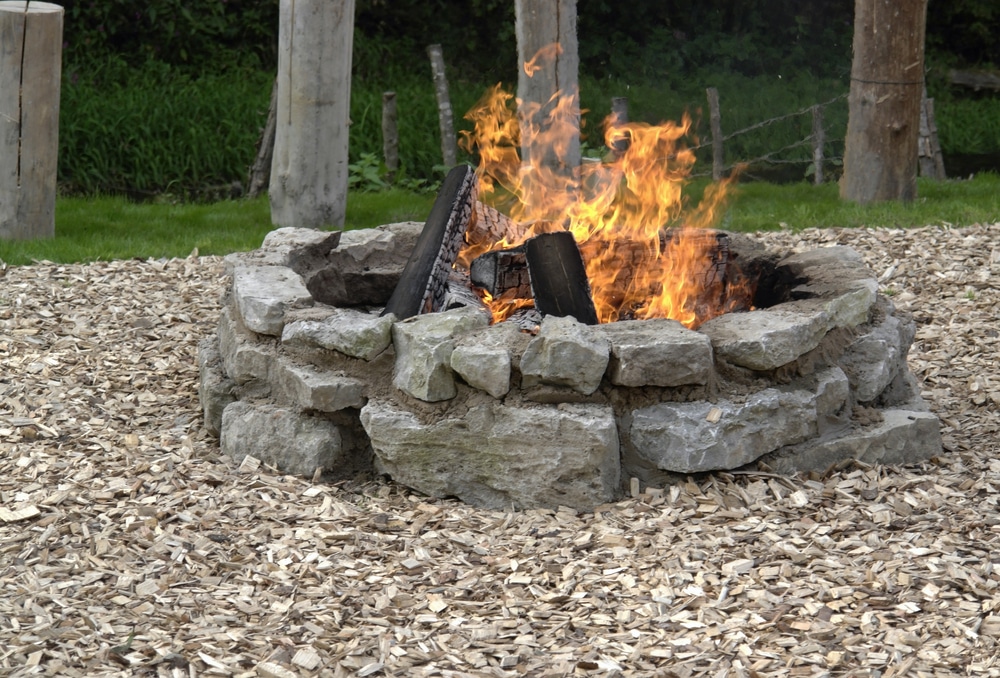Last Updated on
When it comes to creating the perfect outdoor space, you have a lot of choices. But when deciding between an incinerator vs fire pit, there are many important factors to consider before making your decision. Both options have pros and cons, cost comparisons and environmental impacts need to be taken into account – not forgetting safety considerations too. – what’s best for your garden? We investigate all these topics in our guide so you can make the right choice for your home or garden. So if you’re trying to decide whether an incinerator or fire pit is right for you – read on.
Table of Contents:
- Incinerator vs Fire Pit: Pros and Cons
- Cost Comparison
- Environmental Impact
- Safety Considerations
- FAQs in Relation to Incinerator vs Fire Pit
- Conclusion
Incinerator vs Fire Pit: Pros and Cons
Fire pits and incinerators are both popular choices for outdoor heating and entertainment. But which one is right for you? Let’s take a look at the pros and cons of each option to help you decide.
Pros of Fire Pits:
Cost:
Fire pits are typically cheaper than incinerators, making them an attractive choice if budget is a concern.
Portability:
Most fire pits can be moved around your garden or patio easily, allowing you to enjoy the warmth wherever it’s needed most.
Aesthetics:
Fire pits come in all shapes and sizes, so they can fit into any design scheme with ease. Plus, there’s something undeniably romantic about gathering around a crackling fire on a cool evening.
Cons of Fire Pits:
Safety Concerns:
Open flames present safety risks that must be taken seriously when using a fire pit. Be sure to keep children away from the area while it’s lit and never leave it unattended.
Messy Ashes:
After use, fire pits require regular cleaning out of ashes before being used again – not ideal if you’re looking for convenience.
Pro of Incinerators:
Heat Output and Efficiency:
Incinerators provide much more heat output than traditional wood-burning fires due to their enclosed design which helps contain heat better as well as reduce smoke emissions significantly compared to open fires such as those found in traditional firepits. This makes them perfect for larger gatherings where more heat is required over longer periods of time without having to constantly add fuel like wood logs or charcoal briquettes every few hours like with an open flame pit setup.
Con Of Incinerators:
Cost:
Incinerators tend to cost more upfront than their open-flame counterparts. However, this cost may be offset by savings on fuel costs over time since they burn hotter and cleaner requiring less fuel overall. – Installation Requirements
Overall, incinerators and fire pits both have their advantages and disadvantages depending on the situation. Next, let’s discuss the cost comparison before making a decision.
Cost Comparison
When it comes to cost, incinerators and fire pits can vary greatly. Initial purchase price is one of the biggest factors when deciding between an incinerator or a fire pit. Incinerators are generally more expensive than fire pits, with prices ranging from $100 to over $1000 depending on size and material. Fire pits tend to be cheaper, with most models costing less than $200.

Installation costs for both types of outdoor heating solutions can also vary widely. Incinerators typically require professional installation due to their complex design and the need for specialised tools and materials such as chimney liners or venting systems. This can add hundreds of dollars in additional expenses that must be factored into your budget before making a purchase decision. On the other hand, installing a fire pit is usually much simpler and often requires no more than some basic DIY skills and minimal tools or supplies like gravel or sand for levelling purposes.
Finally, ongoing maintenance fees should also be taken into consideration when comparing these two options since they will affect how long each product lasts over time. For example, an incinerator may require regular cleaning of its internal components while a fire pit may only need occasional sweeping out after use in order to prevent build-up of ash or debris inside the bowl itself. Additionally, certain parts like grates or burners may need replacing every few years which could result in added expense if not properly accounted for beforehand during the budgeting stages of your project planning process.
Comparing the cost of an incinerator versus a fire pit is important to consider when deciding which option is best for you. Next, we’ll look at how these two products impact the environment.
Environmental Impact
When it comes to the environmental impact of incinerators and fire pits, there are a few key differences. Incinerators produce fewer emissions than traditional fire pits due to their design, which is typically more efficient at burning fuel. They also tend to burn hotter and faster than open fires, meaning that they create less smoke overall. However, some incinerator models may still produce smoke if not properly maintained or operated correctly.
In terms of waste disposal, both options can be used for disposing of combustible materials such as paper and cardboard safely without creating an excessive amount of ash or smoke in the process. However, incinerators have the added benefit of being able to dispose of non-combustible items like plastics and metals with minimal effort or risk. This makes them a great choice for those looking for an eco-friendly way to get rid of unwanted materials quickly and efficiently without creating additional pollution in the process.
It is important to consider the environmental impact of incinerators and fire pits before making a decision. Next, we will look at safety considerations for both options.
Safety Considerations
When it comes to home and garden products, safety should always be the top priority. From fire pits to grills, there are a variety of items that can pose potential risks if not used properly. That’s why it’s important to consider all safety features available when making your purchase.
Spark Guards:
Spark guards are essential for any outdoor fireplace or fire pit as they protect against sparks flying out of the unit and potentially causing a hazard. They also help keep embers from escaping and landing on nearby combustible materials such as wood decks or grassy areas. Look for spark guards with mesh screens made from durable material like stainless steel or heavy-duty aluminium so they won’t rust over time.
Heat Shields:
Heat shields provide an extra layer of protection between you and the heat source by reflecting some of the radiant heat away from you while still allowing airflow into the unit for proper combustion. Many models come with built-in heat shields but if yours doesn’t have one, make sure to purchase one separately in order to stay safe while using your product outdoors.
Safety Valves:

Safety valves act as an emergency shut off switch in case something goes wrong during use such as a gas leak or other malfunctioning part inside the unit itself which could cause serious harm if left unchecked. Make sure your product has at least one safety valve installed before using it for added peace of mind that you’re taking all necessary precautions when operating any type of home and garden appliance outdoors.
Safety considerations should be taken into account when deciding between an incinerator and a fire pit. Aesthetics, however, may also play an important role in making the best choice for your home and garden.
FAQs in Relation to Incinerator vs Fire Pit
Is an incinerator better than a bonfire?
The answer to this question depends on the purpose of the fire. Incinerators are designed for burning large amounts of waste, such as garden clippings and food scraps, while bonfires are typically used for recreational purposes like cooking or warmth.
In terms of efficiency, an incinerator is more effective at burning materials quickly and efficiently due to its enclosed design and higher temperatures than a bonfire can achieve. Additionally, incinerators produce less smoke which makes them better suited for use in urban areas where air quality is important.
Ultimately, it comes down to what you need from your fire – if you’re looking for a quick way to dispose of garden waste then an incinerator may be the best option; however, if you want something that will provide warmth or cook food then a bonfire would be more suitable.
Is it OK to use a garden incinerator?
Yes, it is ok to use a garden incinerator. It can be an effective way of disposing of garden waste and other combustible materials. However, it is important to ensure that the model you are using meets all safety standards and regulations as well as local laws. Additionally, always follow the manufacturer’s instructions when operating any type of incinerator and never leave it unattended while in use. Finally, make sure that there is adequate ventilation for smoke dispersal when burning materials in your garden incinerator.
Conclusion
When it comes to incinerator vs fire pit, there are a few things to consider. Both have their pros and cons when it comes to cost, environmental impact, safety and aesthetics. Ultimately the decision of which one is best for you will depend on your individual needs and preferences. So whether you decide an incinerator or a fire pit is right for you, make sure that whatever option you choose meets all your requirements so that you can enjoy the outdoors in comfort and safety.
Paul is the type of person who never met a problem he couldn’t fix. He can always be found tinkering with something in his house, even if it isn’t broken! His tips and tricks are often shared on our site. He’s the one you call when something breaks because he has been known to improvise fixes for everything from leaky faucets to malfunctioning dryers.



